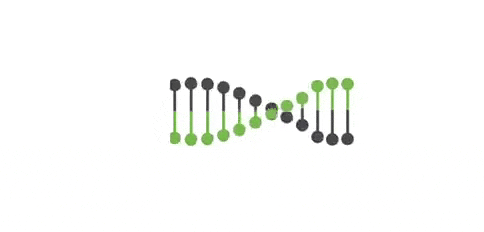
The Risks of Embracing a Cloud EPM Platform in the Age of Agentic AI
As businesses grapple with the future of Enterprise Performance Management (EPM) or Corporate Performance Management (CPM), cloud-based “platforms” promise a streamlined solution for planning, budgeting, forecasting, consolidation, and analytics. Vendors like Oracle, Anaplan, OneStream and SAP position their platforms as the ultimate answer, offering scalability and integration in a tidy package. Yet, with Agentic AI—autonomous, goal-oriented artificial intelligence—emerging as a transformative force, locking into a monolithic EPM platform could carry significant risks, potentially stifling flexibility and innovation.
Agentic AI introduces a new paradigm where intelligent agents orchestrate tasks across diverse systems, tailoring solutions to specific business needs while adapting to varied data platforms and user preferences. This agility clashes with the rigid, one-size-fits-all nature of EPM platforms, which could blunt the tailored value agents promise. The reality is few platforms truly span the enterprise—despite vendor hype—and users’ preference for diverse data consumption tools, like preferred flavors of BI, even Excel, underscores the need for a heterogeneous EPM landscape. In this blog, we’ll explore the risks of adopting a cloud EPM platform at this pivotal moment and highlight how evaluating Darwin Analytics, an Agentic orchestration platform focused on EPM and Business Intelligence (BI), can unlock maximum flexibility and process value without the shackles of endless lateral integrations for technical purity but dubious business value.
The Rise of Agentic AI: A Game-Changer for EPM
Agentic AI isn’t just automation; it’s intelligence with agency—AI systems that act independently to achieve goals, from adjusting forecasts to coordinating across tools. Picture an agent that detects a supply chain snag, recalibrates operational plans, and updates financial projections in real time, all while integrating data from multiple EPM clients and delivering outputs to your chosen interface(s). This future is taking shape, right now.
This shift undermines the EPM platform model, which bets on centralization over adaptability. Agentic AI thrives on flexibility—leveraging specialized tools for each task, not forcing a uniform solution. A platform strategy risks chaining you to a single framework just as agents could free you to optimize across a diverse landscape. Let’s unpack the risks and see how Darwin Analytics offers a smarter alternative.
Risk 1: Sacrificing Tailored Functionality for Business Functions
EPM spans a spectrum of needs. Operational planning demands real-time granularity—think supply chain tweaks for a retailer or production schedules for a factory. Consolidation requires jurisdiction-specific precision, like IFRS compliance or multi-entity reconciliations for a global firm. Financial analytics calls for industry-tuned rigor, such as predictive models for banking or profitability breakdowns for healthcare.
Cloud EPM platforms promise to tackle all this, but their broad strokes often miss the mark when one user audience is overserved to excess with data, features, and their preferred options and others are left to starve. Anaplan excels in operational planning but falters on complex consolidations. Oracle EPM Cloud nails analytics yet can overwhelm smaller teams needing simple forecasting. SAP Analytics Cloud (SAC) straddles the middle, compromising depth for breadth. Anxiety over picking “the singular EPM tool” for all use cases an organization requires yield unsavory trade-offs that dilute the specialization businesses crave.
Agentic AI, by contrast, enables a heterogeneous approach—pairing the best EPM client for each function, like Anaplan for operations, Hyperion for consolidation, and Adaptive Insights for finance. A platform risks forcing you into a generic mold, curtailing this precision just as agents could tailor solutions to your exact needs. For a multinational with diverse requirements, this loss of customization could mean settling for “good enough” at best, or more likely “not enough”, when “perfect fit” is within reach.
Risk 2: Constraining Data Platform Flexibility
EPM relies on data platforms—ERP systems, data warehouses, cloud databases—that reflect a company’s tech priorities. Some lean on SAP HANA for its SAP synergy, others adopt Snowflake for cloud scalability, and many cling to on-premises data platforms like Oracle for legacy stability. These choices align with budgets, skills, and long-term goals, not vendor whims.
Cloud EPM platforms, however, often tie you to their preferred ecosystem. Oracle EPM Cloud meshes with Oracle OCI but stumbles with SAP S/4HANA. Anaplan favors cloud data lakes over older setups. This rigidity can force data migrations or kludgy integrations, clashing with your investment strategy and inflating costs. A platform’s “all-in” demand risks derailing your data roadmap for its convenience.
Agentic AI sidesteps this trap. Agents connect to any data source—HANA, Snowflake, or a hybrid—letting you leverage existing platforms while adopting new ones incrementally. A platform locks you into a single stack; agents adapt to your evolving priorities. Committing now could anchor you to a soon-outdated model, just as AI promises unbound flexibility.
Risk 3: Undermining User-Driven Data Consumption Preferences
Users—analysts, planners, executives—consume EPM data differently. Some thrive on dashboards, others dive into BI or CPM clients, and many still rely on Excel’s unmatched flexibility. This variety reflects human nature, not inefficiency. Yet, cloud EPM platforms often impose a singular experience, prioritizing native interfaces over user choice.
Oracle pushes its reporting tools, Anaplan its visualizations, SAC its analytics suite—all with varying degrees of lock-in. Exports to Excel lose real-time fidelity, and third-party BI integrations demand extra effort or fees. For users who blend EPM outputs with external data or craft custom spreadsheets, this feels restrictive, even alienating.
Agentic AI embraces this diversity. Agents deliver data wherever users want it—Excel, Tableau, a custom app—without dictating the front end. They bridge specialized EPM clients to preferred tools, empowering autonomy. A platform’s uniformity risks friction and workarounds, especially as agents could amplify user freedom instead.
The Myth of the All-in-One EPM Platform
Vendors tout platforms as enterprise-wide saviors, but few live up to the hype. SAC lacks BPC’s consolidation depth, Oracle’s complexity daunts smaller firms and small groups within larger firms, and Anaplan’s financial focus trails its operational prowess. Gaps persist, forcing companies to patch platforms with point solutions or legacy systems—hardly the seamless vision promised.
This reality amplifies the risks of adoption now. If no platform by itself fully covers the enterprise, why bet on one at all, especially jusy as Agentic AI emerges? A global firm might still need BPC for consolidation, Planful for budgeting, and Power BI for analytics—a mix no platform unifies alone. Agents can weave this tapestry into a coherent strategy; a platform leaves you stitching it together manually.
Darwin Analytics: Unlocking Flexibility and Process Value
Amid these risks, evaluating Darwin Analytics offers a compelling counterpoint. This Agentic orchestration platform, focused on EPM and BI, is agnostic to front-end clients and data platforms, delivering maximum flexibility. Unlike monolithic platforms, Darwin Analytics doesn’t force a single mold—it enhances your existing landscape, whether that’s SAP BPC, Anaplan, or a hybrid mix, while integrating with any data stack, from HANA to Snowflake to on-premises Oracle.
The benefits are clear. First, it tailors solutions to business functions. Darwin’s agents orchestrate specialized EPM clients—say, Hyperion for consolidation, Anaplan for operations—ensuring each team gets optimal tools without compromise. Second, it preserves data platform freedom, connecting to your current investments and future adoptions seamlessly, avoiding forced migrations. Third, it honors user preferences, delivering outputs to Excel, BI tools, or custom interfaces with real-time fidelity, sidestepping platform lock-in.
Most critically, Darwin Analytics shifts focus from endless integration to process value. Platforms demand constant syncing—APIs, middleware, data pipelines—to maintain their “unified” illusion, draining resources. Darwin’s Agentic approach orchestrates processes across tools, prioritizing outcomes over tech conformity. For a firm juggling statutory reporting, operational planning, and industry-specific analytics, this means less time wrestling with integrations and more time driving insights.
Evaluating Darwin Analytics now positions you to test this flexibility without upheaval. It bolts onto BPC to extend its life, bridges to cloud EPM clients as you explore options, and unifies a heterogeneous landscape—all while dodging the platform trap. As Agentic AI matures, Darwin offers a scalable enabler of value, not a rigid anchor.
The Strategic Advantage of Heterogeneous EPM Landscapes
These risks and Darwin’s benefits underscore a core truth: heterogeneity beats homogeneity. Businesses are complex—spanning functions, regions, and priorities—and EPM should reflect that. A mix of clients like Hyperion, Adaptive Insights, and Excel, orchestrated by agents, mirrors this reality better than any platform.
Picture a healthcare provider: clinical ops needs real-time staffing plans, finance demands GAAP-compliant consolidation, and strategy craves payer analytics. No platform aces all three. Darwin Analytics could pair Anaplan, Oracle, and a custom model, pulling data from a hybrid Azure-SAP stack and feeding Excel or dashboards as needed. A platform like SAC forces trade-offs; agents—and Darwin—embrace the diversity.
This extends to deployment. A firm with SAP roots can keep HANA while testing BigQuery, with Darwin bridging the gap. Platforms demand an all-in bet; agents adapt. As AI evolves, this flexibility will separate leaders from laggards.
Timing Matters: Why Now Is Risky
Adopting a platform in 2025, as Agentic AI accelerates, is a gamble. Microsoft’s Satya Nadella recently warned that AI could disrupt SaaS apps on CRUD databases, shifting logic to agent-driven tiers. If true, platforms like Oracle EPM or Anaplan could fade, their value eclipsed by AI ecosystems.
Migration takes time—retraining, retooling, integrating—only to risk obsolescence mid-flight. Waiting lets you leverage tools like Darwin Analytics to enhance what you have, test the AI waters, and pivot as clarity emerges. A platform locks you in; flexibility keeps you agile.
Conclusion: Choose Flexibility Over Platforms
Cloud EPM platforms tempt with simplicity, but at Agentic AI’s dawn, their risks loom large. Sacrificing tailored functionality, data flexibility, and user choice for a monolithic solution undermines the adaptability businesses need. Few platforms span the enterprise, and integration woes sap value. Users’ love for Excel and diverse tools only strengthens the case for heterogeneity.
Darwin Analytics offers a way forward—agnostic, Agentic, and focused on process over platform. It maximizes flexibility, preserves investments, and frees you from integration drudgery, all while positioning you for AI’s next wave. Don’t lock into a platform now; build a landscape that evolves with you, powered by agents. In 2025, that’s the winning bet.


Leave a Reply